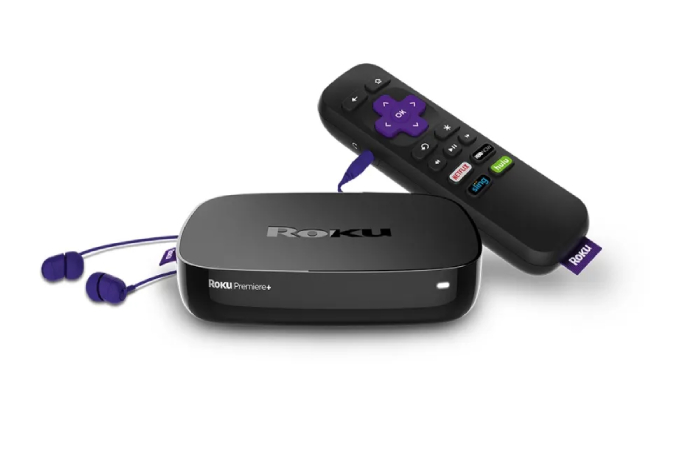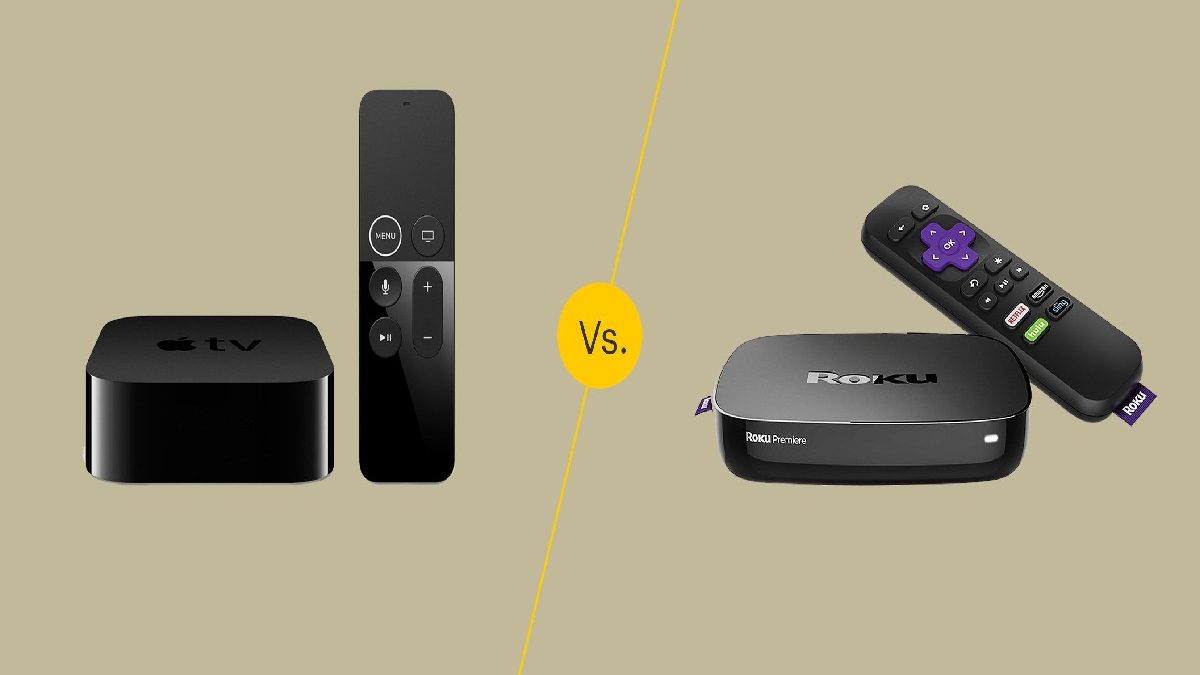Table of Contents
Introduction
Apple TV and Roku (and, very recently, Chromecast) are the most popular streaming media players designed for streaming photo, audio, and video content — both from the Internet and from locally stored content on computers, phones, and tablets — to HDTVs.
The Roku offers more online content options, but does not have Bluetooth or an optical audio (except Roku Ultra) output like Apple TV does. Apple TV seamlessly integrates and interacts with all existing Apple devices, which is useful for Apple fans. But to anyone not deeply entrenched in the Apple ecosystem, Roku makes for a good option with its vast array of channels and third-party content options.
Streaming Apps

- The most important part of a streaming media box is what media it can stream, which means looking at the apps and libraries available on each device.
- Apple supports most of the major streaming services through the Apple TV app store. Google Play isn’t available, nor is the massive selection of more interest-based apps that Roku has.
- But the Apple TV does support Twitch, which Roku curiously lacks.
- Of course, Apple TV also provides easy access to any content available in Apple’s movie, TV, and music libraries, along with Apple TV +.
- However, now that Apple TV apps are available across various media centers and innovative TV platforms, that benefit seems less unique.
- Roku has long had one of the strongest app libraries for media centers, covering just about every major name, including Amazon Prime Video, Google Play Movies & TV, Hulu, Netflix, and YouTube.
- Along with thousands of other apps (which Roku calls channels) across different topics, activities, interests, regions, and cultures.
- It even has Apple TV, so you can access Apple’s video library or watch content from Apple TV +.
Remote and Voice Control
- Here the Apple TV and Roku have small, simple remotes through built-in microphones for voice instructions (in the case of the Roku, voice commands are available on the Streaming Stick + and Ultra models).
- The Roku remote is a sausage-shaped black wand with a large purple address pad, while the Apple TV remote is a slim aluminum slide with a touchpad and motion sensors.
- The Apple TV remote is the extra advanced of the two, with a touch and motion-based interface, but that’s not the significant advantage it offers. You also get Apple’s Siri voice assistant, just like your iPad or iPhone.
- You can ask Siri to find something to watch or listen to on Apple TV. Nonetheless, it can do a lot extra than that. For example, Siri enables Apple TV to function as a smart home hub for Apple HomeKit-compatible devices.
- So you can control your bright lights, locks, thermostats, and more by talking into the remote. Siri can also deliver news, sports scores, weather updates, and other helpful information.
- The Roku remote has a microphone that allows you to search for content by speaking into it and provides limited control done the device.
- Nonetheless, that’s about it. Although Roku doesn’t offer much voice assistant power on its own, you can at least control the Roku Ultra utilizing an intelligent speaker with Amazon Alexa or Google Assistant.
- The Roku Ultra remote has an advantage that the Apple TV remote lacks: a headphone jack. You can connect your favorite headphones (or the included JBL headphones) to the remote.
- And all sound will go done your headphones instead of the TV. It is an excellent function to watch TV without disturbing anyone nearby.
- Extra Roku models lack the headphone jack but still support the private listening feature through the Roku app.
- Which allows you to receive audio from the device on your phone to be connected through any connected headphones.
- The Roku Ultra also has a remote search button in the media center, making the little one play a tone if it can’t find it, which is a nice touch.
Audio and Video Quality
- Both media centers offer models that support 4K video from 4K content services and display high dynamic range (HDR) video.
- The difference is that Roku 4K transmitters only support the relatively simple HDR10 HDR format. In contrast, Apple TV 4K supports HDR10 and Dolby Vision, an additional HDR format with dynamic metadata.
- The distinction between them isn’t very noticeable unless you put them side by side, but it’s an added tool in the Apple TV 4K box.
- The transmitters are about the same when it comes to audio and support DTS Digital Surround and Dolby Atmos.
- AirPlay 2 lets you easily stream to Apple TV from your iPhone, iPad, or Mac Display and satisfied mirroring
- If you’re an Apple device operator, the Apple TV wins on the streaming front from your device.
- Both models feature Apple AirPlay 2, which allows you to cast your iPad, iPhone, or Mac screen directly to your television.
- AirPlay also supports streaming audio, allowing you to play higher quality Wi-Fi audio streams than Bluetooth.
- The Roku streamers here also support screen mirroring and content playback. However, this is a bit more limited.
- You need to do it all through the Roku app on your phone or tablet. The good news is, these resources you can stream from your Android device, which the Apple TV doesn’t allow.
- The bad news is that the app-based joining is less robust than AirPlay 2.
Which Media Streamer Should You Buy?
- Roku streamers have the best value, as even the high-end Roku Ultra costs a little over half the price of Apple TV 4K and has more apps available.
- The headphone jack on the remote is a nice bonus too.
- On the other hand, Apple TV remains attractive to Apple device users who want an easy and painless way to connect their computer, phone, or tablet to their TV.
- In addition, Siri offers much extra functionality than Roku’s voice search feature. But, eventually, it all comes down to your needs and budget.
- Lastly, we should mention that we also quite like the Amazon Fire TV platform, which features similar pricing to Roku’s with an equally solid selection of apps, Dolby Vision support, and intelligent home control via Alexa.
- Here the $ 120 Amazon Fire TV Cube even features hands-free support for Alexa, allowing you to regulator your home theater with your voice without lifting a remote.
- Here the $ 50 Fire TV Stick 4K isn’t hands-free, but it has the same media streaming features and allows you to access Alexa through the remote’s microphone.
- So if you’re not interested in Apple or Roku, Amazon is worth considering.
Models and Prices
- The Apple TV 4K costs $ 179 for the version with 32GB of storage or $ 199 for 64GB. The 1080p Apple TV HD costs less. With a single 32GB model for $ 149.
- The Roku Ultra is the company’s most expensive streamer at $ 99.99. However, Roku also offers several 4K-capable streamers for much less. With the $ 39.99 Roku Premiere and the $ 49.99 Roku Streaming Stick +.
- They don’t take headphone jack-equipped remotes like the Roku Ultra, but they support significantly less 4K HDR video than the Apple TV. On the other hand, the 1080p Roku Express is the least expensive model at $ 29.99.
Conclusion
Based on what you can see, Apple TV and Roku are more or less comparable in almost every aspect. The high-end models offer the same streaming quality and wireless performance, and there isn’t much difference in the simplicity of the layout. The Apple TV option costs nearly twice as much as the Roku, making price the biggest difference.

